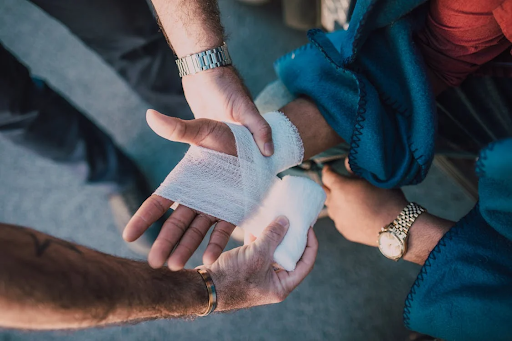When someone is injured in an accident, medical documentation plays a critical role. Records such as doctor’s notes, test results, treatment plans, and hospital reports help illustrate the full extent of the injuries and the care required.
In a personal injury claim, this evidence is essential—not just to prove what happened, but to justify the compensation needed for recovery. Without it, insurers or opposing lawyers may challenge the severity of the injury or deny coverage altogether. That’s why many people rely on trusted legal help for personal injury cases.
Establishing Causation: Linking Injuries to the Incident
Emergency room records, X-rays, and doctor’s notes do more than list injuries—they connect them directly to the accident. For example, a spine MRI taken days after a car crash proves the collision caused the herniated disc, not some prior condition.
Without these time-stamped records, insurers often argue injuries happened earlier or weren’t serious. A delay in treatment or missing details can provide them with grounds to deny claims. Consistent documentation leaves no room for doubt.
Quantifying Damages: Proving Severity and Long-Term Effects
Medical documentation doesn’t just show that an injury happened—it also helps explain how serious it is and how it affects daily life. Different types of records help support different parts of a personal injury claim:
- Medical expenses: Bills, surgery records, and therapy notes show the cost of treatment and ongoing care.
- Lost wages: Doctor’s notes about work restrictions or time off help explain why someone couldn’t return to their job.
- Pain and suffering: Ongoing reports of pain, emotional distress, or physical limits help show how the injury affects the person’s quality of life.
Countering Disputes: Preventing “Gaps” in Treatment
Insurance companies look closely for gaps in medical care. If there’s a delay between the accident and follow-up visits, they may claim the person already had the injury or that they’ve fully healed.
That’s why it’s so important to keep medical records consistent and detailed. Every doctor visit, test, and referral helps tell a complete story. Ongoing treatment notes and specialist reports track recovery and protect against arguments that the injuries weren’t serious or connected to the incident.
Legal Admissibility: Ensuring Records Meet Court Standards
Medical records may meet strict standards to be legally valid. Official documents must be signed by treating providers and have precise dates and details. Illegible notes or unofficial logs may be challenged in court.
Electronic health records from hospitals and clinics carry more weight than personal journals. Diagnostic tests, such as MRIs or X-rays, should include radiologist reports. Pharmacy records help verify that prescribed medications were taken.
Attorneys carefully review documentation to ensure nothing is missing or questionable. Well-organized records speed up negotiations because insurers can’t dispute verified medical files. Complete medical files enable experts to explain injuries to judges and jurors in court clearly.
Even small details matter. For example, a physical therapist’s notes about limited mobility can support pain claims more effectively than a patient’s word alone. Proper documentation turns medical facts into undeniable evidence.
Final Thoughts
Accurate, timely medical records can make or break a personal injury claim. They protect victims’ rights, show the full impact of the injury, and help ensure we receive fair compensation for what we’ve lost.









